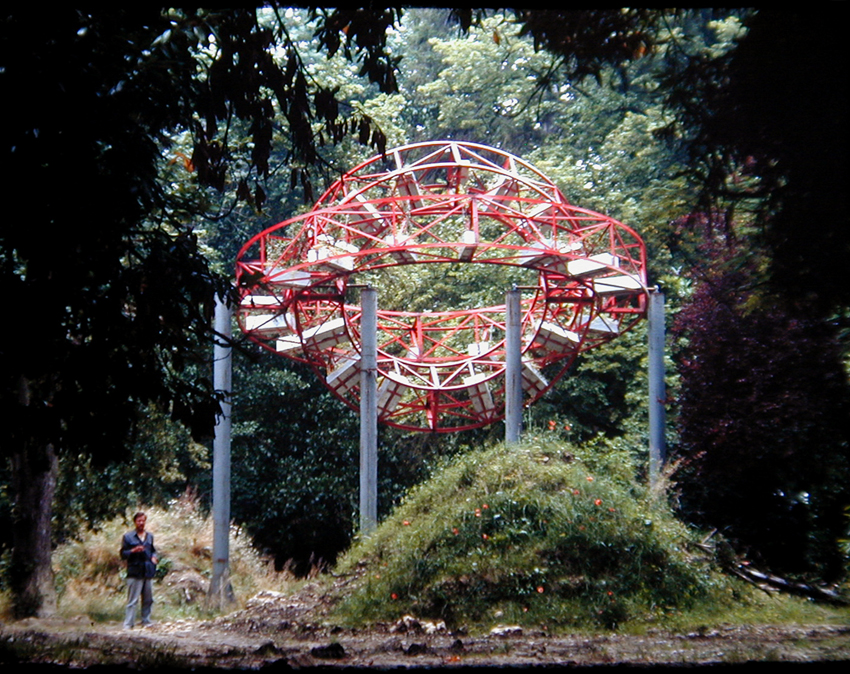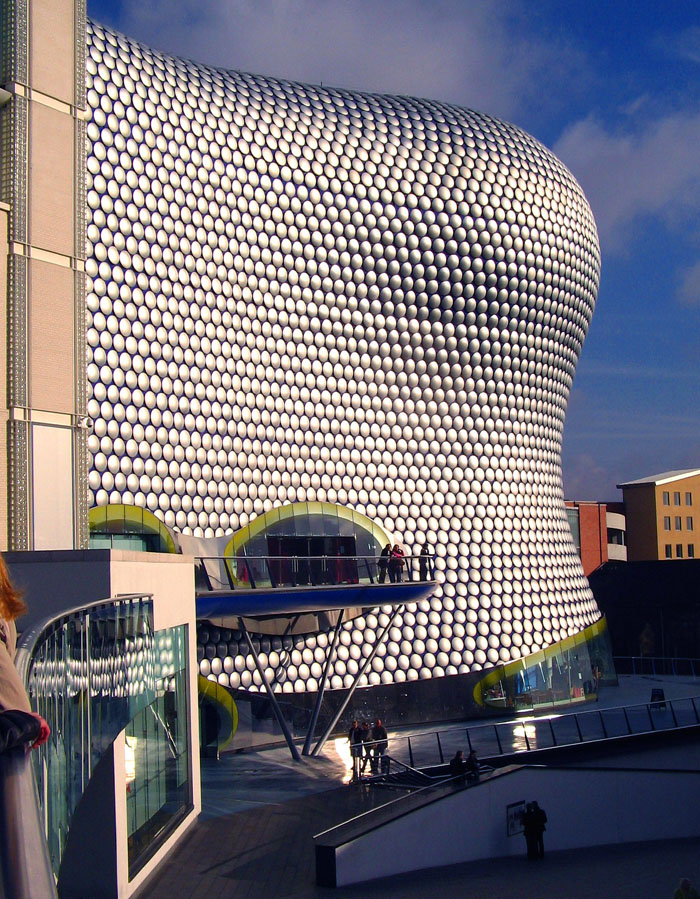|
Digital Morphogenesis
Digital morphogenesis is a type of generative art in which complex shape development, or morphogenesis, is enabled by computation. This concept is applicable in many areas of design, art, architecture, and modeling. The concept was originally developed in the field of biology, later in geology, geomorphology, and architecture. In architecture, it describes tools and methods for creating forms and adapting them to a known environment.Leach, Neil (2009). 'Digital Morphogenesis', ''Architectural Design'', 79, 1, pp. 32-37 Developments in digital morphogenesis have allowed construction and analysis of structures in more detail than could have been put into a blueprint or model by hand, with structure at all levels defined by iterative algorithms. As fabrication techniques advance, it is becoming possible to produce objects with fractal or other elaborate structures. Notable persons * Alan Turing * Neri Oxman * Rivka Oxman See also *Bionics, Biomimicry * Digital architecture ... [...More Info...] [...Related Items...] OR: [Wikipedia] [Google] [Baidu] |
Morphogenesis
Morphogenesis (from the Greek ''morphê'' shape and ''genesis'' creation, literally "the generation of form") is the biological process that causes a cell, tissue or organism to develop its shape. It is one of three fundamental aspects of developmental biology along with the control of tissue growth and patterning of cellular differentiation. The process controls the organized spatial distribution of cells during the embryonic development of an organism. Morphogenesis can take place also in a mature organism, such as in the normal maintenance of tissue by stem cells or in regeneration of tissues after damage. Cancer is an example of highly abnormal and pathological tissue morphogenesis. Morphogenesis also describes the development of unicellular life forms that do not have an embryonic stage in their life cycle. Morphogenesis is essential for the evolution of new forms. Morphogenesis is a mechanical process involving forces that generate mechanical stress, strain, and mo ... [...More Info...] [...Related Items...] OR: [Wikipedia] [Google] [Baidu] |
Biomimicry
Biomimetics or biomimicry is the emulation of the models, systems, and elements of nature for the purpose of solving complex human problems. The terms "biomimetics" and "biomimicry" are derived from (''bios''), life, and μίμησις ('' mīmēsis''), imitation, from μιμεῖσθαι (''mīmeisthai''), to imitate, from μῖμος (''mimos''), actor. A closely related field is bionics. Nature has gone through evolution over the 3.8 billion years since life is estimated to have appeared on the Earth. It has evolved species with high performance using commonly found materials. Surfaces of solids interact with other surfaces and the environment and derive the properties of materials. Biological materials are highly organized from the molecular to the nano-, micro-, and macroscales, often in a hierarchical manner with intricate nanoarchitecture that ultimately makes up a myriad of different functional elements. Properties of materials and surfaces result from a complex interpla ... [...More Info...] [...Related Items...] OR: [Wikipedia] [Google] [Baidu] |
Michael Weinstock
Michael may refer to: People * Michael (given name), a given name * he He ..., a given name * Michael (surname), including a list of people with the surname Michael Given name * Michael (bishop elect)">Michael (surname)">he He ..., a given name * Michael (surname), including a list of people with the surname Michael Given name * Michael (bishop elect), English 13th-century Bishop of Hereford elect * Michael (Khoroshy) (1885–1977), cleric of the Ukrainian Orthodox Church of Canada * Michael Donnellan (fashion designer), Michael Donnellan (1915–1985), Irish-born London fashion designer, often referred to simply as "Michael" * Michael (footballer, born 1982), Brazilian footballer * Michael (footballer, born 1983), Brazilian footballer * Michael (footballer, born 1993), Brazilian footballer * Michael (footballer, born February 1996), Brazilian footballer * Michael (footballer, born March 1996), Brazilian footballer * Michael (footballer, born 1999), Brazilian football ... [...More Info...] [...Related Items...] OR: [Wikipedia] [Google] [Baidu] |
Evolutionary Computation
Evolutionary computation from computer science is a family of algorithms for global optimization inspired by biological evolution, and the subfield of artificial intelligence and soft computing studying these algorithms. In technical terms, they are a family of population-based trial and error problem solvers with a metaheuristic or stochastic optimization character. In evolutionary computation, an initial set of candidate solutions is generated and iteratively updated. Each new generation is produced by stochastically removing less desired solutions, and introducing small random changes as well as, depending on the method, mixing parental information. In biological terminology, a population of solutions is subjected to natural selection (or artificial selection), mutation and possibly recombination. As a result, the population will gradually evolve to increase in fitness, in this case the chosen fitness function of the algorithm. Evolutionary computation techni ... [...More Info...] [...Related Items...] OR: [Wikipedia] [Google] [Baidu] |
Evolutionary Art
Evolutionary art is a branch of generative art, in which the artist does not do the work of constructing the artwork, but rather lets a system do the construction. In evolutionary art, initially generated art is put through an iterated process of selection and modification to arrive at a final product, where it is the artist who is the selective agent. Evolutionary art is to be distinguished from BioArt, which uses living organisms as the material medium instead of paint, stone, metal, etc. Overview In common with biological evolution through natural selection or animal husbandry, the members of a population undergoing artificial evolution modify their form or behavior over many reproductive generations in response to a selective regime. In interactive evolution the selective regime may be applied by the viewer explicitly by selecting individuals which are aesthetically pleasing. Alternatively a selection pressure can be generated implicitly, for example according to the len ... [...More Info...] [...Related Items...] OR: [Wikipedia] [Google] [Baidu] |
Generative Art
Generative art is post-conceptual art that has been created (in whole or in part) with the use of an autonomous system. An ''autonomous system'' in this context is generally one that is non-human and can independently determine features of an artwork that would otherwise require decisions made directly by the artist. In some cases the human creator may claim that the Generative systems, generative system represents their own artistic idea, and in others that the system takes on the role of the creator. "Generative art" often refers to algorithmic art (algorithmically determined Computer-generated artwork, computer generated artwork) and synthetic media (general term for any algorithmically generated media), but artists can also make generative art using systems of chemistry, biology, mechanics and robotics, smart materials, manual randomization, mathematics, data mapping, symmetry, and Tessellation, tiling. Generative algorithms, algorithms programmed to produce artistic work ... [...More Info...] [...Related Items...] OR: [Wikipedia] [Google] [Baidu] |
Blobitecture
Blobitecture (from blob architecture), blobism and blobismus are terms for a movement in architecture in which buildings have an organic, amoeba-shaped building form. Though the term ''blob architecture'' was already in vogue in the mid-1990s, the word ''blobitecture'' first appeared in print in 2002, in William Safire's "On Language" column in the ''New York Times Magazine''. Though intended in the Safire article to have a derogatory meaning, the word stuck and is often used to describe buildings with curved and rounded shapes. Origins of the term "blob architecture" The term "blob" was used by the Czech-British architect Jan Kaplický for the first time for the "Blob Office Building" in London in 1986. The building was characterized by an organic, aerodynamic shape and was touted for being energy-saving. 'Blob architecture' was coined by architect Greg Lynn in 1995 in his experiments in digital design with metaball graphical software. Soon a range of architects and furniture ... [...More Info...] [...Related Items...] OR: [Wikipedia] [Google] [Baidu] |
Digital Architecture
Digital architecture refers to aspects of architecture that feature digital technologies or considers digital platforms as online spaces. The emerging field of digital architectures therefore applies to both classic architecture as well as the emerging study of social media technologies. Within classic architectural studies, the terminology is used to apply to digital skins that can be streamed images and have their appearance altered. A headquarters building design for Boston television and radio station WGBH by Polshek Partnership has been discussed as an example of digital architecture and includes a digital skin. Within social media research, digital architecture refers to the technical protocols that enable, constrain, and shape user behavior in a virtual space. Features of social media platforms such as how they facilitate user connections, enable functionality, and generate data are considered key properties that distinguish one digital architecture from another. Overv ... [...More Info...] [...Related Items...] OR: [Wikipedia] [Google] [Baidu] |
Bionics
Bionics or biologically inspired engineering is the application of biological methods and systems found in nature to the study and design of engineering systems and modern technology. The word ''bionic'', coined by Jack E. Steele in August 1958, is a portmanteau from biology and electronics which was popularized by the 1970s U.S. television series ''The Six Million Dollar Man'' and ''The Bionic Woman'', both based on the novel ''Cyborg (novel), Cyborg'' by Martin Caidin. All three stories feature humans given various superhuman powers by their electromechanical implants. According to proponents of bionic technology, the technology transfer, transfer of technology between lifeforms and manufactured objects is desirable because evolutionary pressure typically forces living organisms—fauna and flora—to become optimized and efficient. For example, dirt- and water-repellent paint (coating) was inspired by the hydrophobic properties of the Nelumbo, lotus flower plant (the lotus e ... [...More Info...] [...Related Items...] OR: [Wikipedia] [Google] [Baidu] |
Biology
Biology is the scientific study of life and living organisms. It is a broad natural science that encompasses a wide range of fields and unifying principles that explain the structure, function, growth, History of life, origin, evolution, and distribution of life. Central to biology are five fundamental themes: the cell (biology), cell as the basic unit of life, genes and heredity as the basis of inheritance, evolution as the driver of biological diversity, energy transformation for sustaining life processes, and the maintenance of internal stability (homeostasis). Biology examines life across multiple biological organisation, levels of organization, from molecules and cells to organisms, populations, and ecosystems. Subdisciplines include molecular biology, physiology, ecology, evolutionary biology, developmental biology, and systematics, among others. Each of these fields applies a range of methods to investigate biological phenomena, including scientific method, observation, ... [...More Info...] [...Related Items...] OR: [Wikipedia] [Google] [Baidu] |
Rivka Oxman
Rivka Oxman (; April 6, 1948 - March 16, 2025) was an Israeli architect, researcher, and professor at the Technion Institute in Haifa. Her research interests are related to design and computation, including digital architecture and methods, and exploring their contribution to the emergence of new paradigms of architectural design and practice. Life and career Oxman graduated from the Hebrew Reali School in Haifa in 1966. She received graduate and undergraduate degrees from the Technion – Israel Institute of Technology, where she later became a professor and Vice Dean for Teaching at the Faculty of Architecture and Town Planning. She has been a visiting professor at Stanford University and Delft University of Technology and held research appointments at MIT and Berkeley. She has worked at the University of Sydney and Kaiserslautern University. She married fellow architect Robert Oxman, and they have two daughters, Neri and Keren. In 2006 she was elected as a Fellow of the ... [...More Info...] [...Related Items...] OR: [Wikipedia] [Google] [Baidu] |
Neri Oxman
Neri Oxman (; born February 6, 1976) is an American-Israeli designer and former professor known for art that combines design, biology, computing, and materials engineering. She coined the phrase "material ecology" to define her work. Oxman was a professor of Media Arts and Sciences at the Massachusetts Institute of Technology, MIT MIT Media Lab, Media Lab, where she founded and led the Mediated Matter research group. She has had exhibitions at the Museum of Modern Art (MoMA), Boston's Museum of Science (Boston), Museum of Science, San Francisco Museum of Modern Art, SFMOMA, and the Centre Pompidou, which have her works in their permanent collections. Many of Oxman's projects use new platforms and techniques for 3D printing and fabrication, often incorporating nature and biology. They include co-fabrication systems for building hybrid structures with silkworms, [...More Info...] [...Related Items...] OR: [Wikipedia] [Google] [Baidu] |






